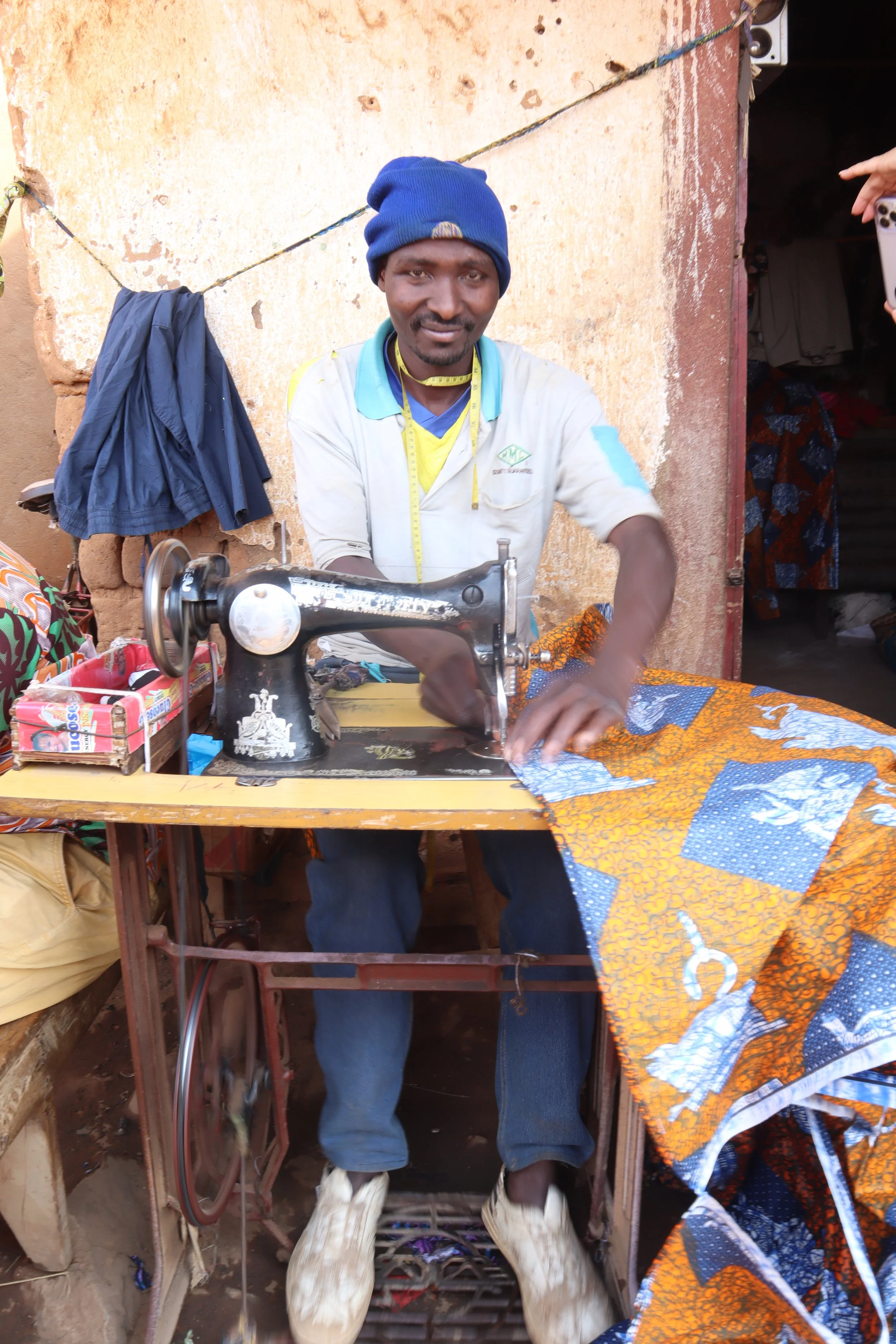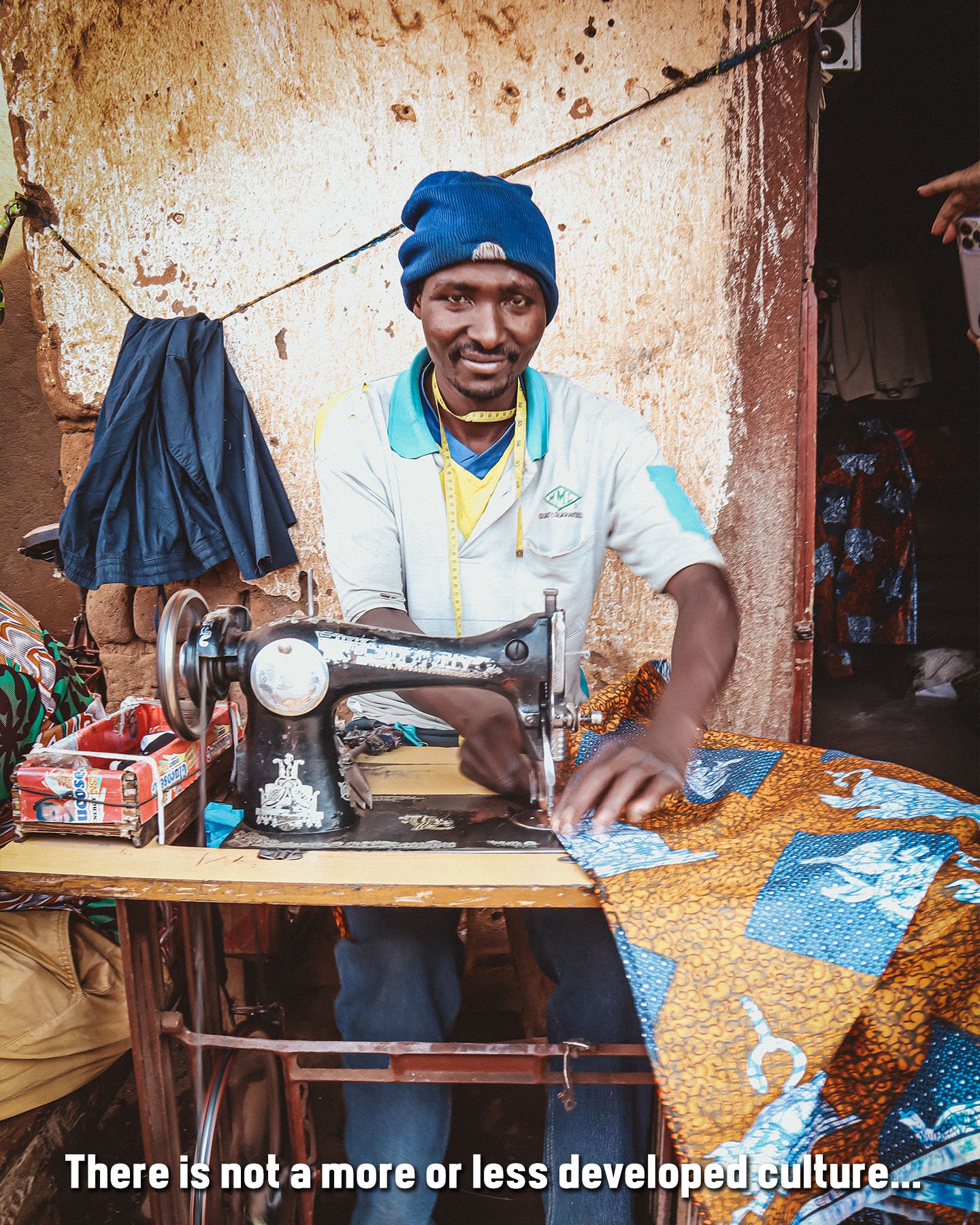This was always going to be complicated, isn’t it?
I was in a village, camera in hand, suddenly surrounded by dozens of children. That morning I had just talked with my team about how to tell stories of people who live in one of the world’s poorest settings without being sensationalistic or exploitative.
That’s not the story we’re here to tell. That’s not the story that really helps anybody, I often repeated.
And yet, the visceral signs of poverty were everywhere. Aged clothing. Kwashiorkor.
And it became more apparent that telling a good story in an ethical way involved so much more than making sure our pictures wouldn’t look like they belonged on an infomercial with Sarah McLaughlin.
Using a magic wand on Photoshop to hide the uncomfortable parts of what I was seeing in person? That can’t be right, either. Especially since many of the people I talked to shared how difficult it was to feed their families and make basic needs. Isn’t avoiding those elements in the name of ethical storytelling simply toxic positivity rebranded?
—-
Driving between the city and the village wasn’t far. Geographically, that is. But the quality of the rugged roads meant that even a short distance would take hours.
Going between the two spots allowed me to see the change in lifestyles as we got further outside of town. On the outskirts, on the sides of hills, were a number of fairly large houses. Perhaps five or six rooms, plus impressive verandas and balconies that overlooked the whole valley. The white stucco exterior and polished tiled floors stood in contrast to the clay brick homes we saw further outside.
It struck me how much these homes and this particular spot in Burundi reminded me of the Philippines. The two probably don’t get compared a whole lot, but the look of these homes and their construction style were so reminiscent of upper-middle class homes in many Filipino cities.
Throughout my lifetime, the Philippines has seen steady economic growth, nearly doubling the annual income per person over 30 years. Burundi, on the other hand, went the other direction, seeing that number halved. This downturn was undoubtedly sustained by the conflict and political instability throughout that window, but as the country appeared more peaceful than it had been in a long while, I wondered if a moment of growth might be on the horizon, and if these houses could be a sign.
Like Burundi, the Philippines has areas where poverty is intensified, and people’s homes are rugged structures made from scrap wood and metal. Like Burundi, there are also cities, middle class homes, and areas of decent infrastructure. The difference between the middle-income country and the lower-income country is in the ratio of people who have access to security, infrastructure, and comfort.
When we think of global inequality, we often think in terms of country comparisons. We’d probably be better off if instead we compared different parts of the same country. We’d see similar patterns in most places. Wealth and jobs tend to concentrate around cities. Poverty is much more pronounced in rural areas.
Lifestyles also tend to be drastically different between urban and rural areas as well. Perhaps this is an obvious statement, since this dynamic applies pretty well to the United States and likely every country.
This became especially apparent to me as we talked to people.
After interviewing a man from one of the villages, we asked to take pictures of him and his wife. When we asked him to pose with his arm around her, they posed with uncomfortable expressions, his elbow resting bent on her shoulder. The final product was an endearing, avant garde-looking photograph, but the process reminded me that things you could take for granted in the city might be considered pretty foreign up here.
—--
A lot of these sights made me think of an image I’ve had stored on my phone for years. One that says ‘There is not a more developed or less developed culture.’
The reality is, I’m an outsider to this sort of poverty. I share the stories that people have told me they want people to know about, while recognizing that it needs to be done with a lot of humility. It’s far too easy to create assumptions based on Western expectations.
One thing I’ve grown more sensitive to is the fact that development or progress will look different in different places.
There isn’t one linear path forward.
Some societies put a greater emphasis on money, measuring success in graphs designed to chart economic growth.
Others place a value on having time, opting to operate at half-speed for weeks, months at a time. After all, life is a precious thing. You’re going to want to savor it.
Other places and peoples will see wealth as more synonymous with family, aesthetics, or natural resources. I remember having an Umpqua dentist tell me he was raised to measure his wealth in terms of what he was able to give away.
So then what? If everyone’s concept of progress or development is a little bit different, how do you move forward? What metrics do you even use?
Ambiguity can easily turn into an invitation to disengage.
‘Huh, good question. Guess that’s not our business as Americans, though!’
But so much of the inequality between different parts of the world are the result of colonialism, conquest, and slavery… things that many of us have benefitted from.
We have some moral responsibility to work against things like poverty and inequality, but we don’t have the authority to be perfect arbiters of our success.
Do we even know what that’s like?
I guess that’s why listening to locals will always be important. Hearing their stories will always be important. Working relationally, not just transactionally, will always be important.
Poverty isn’t a culture. Poverty isn’t a characteristic. It is still something worth working against, and we shouldn’t think of it as a cultural expression.
However, we should be humble enough to realize that progress against poverty may look completely different than what we expect.
—----
I have dinner with a man named Enos and his wife. They live in a pretty remote village, and getting to their home takes a bit of a climb up a hill.
He talks to me about their old life and their new life. Regenerative agriculture and environmental restoration made a big difference in their ability to grow food. They used to eat once a day. They used to skip a lot of meals. Now they eat three meals a day.
Then I look at his kids eating their dinner and I remember that he has five. When he tells me that the family eats three meals a day and never skips, that's 27 meals a day in total. A pretty significant feat.
His village is still rural, his home is remote. But now it has a solar panel. Many of the village kids are still showing kwashiorkor, but the replenished soil lets Enos grow more food. Maybe soon his neighbors?
There was a time where I would have written his village off as poor, and yes, widespread poverty remains. But it also makes progress. And again, the world is complex.
My inner idealist wants every place to solve their problems and make progress in a way that is totally theirs. Self determination is extremely important.
Of course, in our more complex world, cultures, people, and places aren’t insulated from each other, and every act of self-determination is also shaped by a plethora of outside influences. Maybe that self-determined path still takes clues and inspiration from Western sources.
How do you know when a place truly determines its own development? It’s never really that simple and straightforward, is it?
Is Korea an example? It’s now such a major exporter of culture, and many traditions, art styles, dishes, etc. have been passed from one generation to the next. But there’s also a sense of a generation gap, a change in thought from an older generation to a younger one. These evolutions are perhaps natural, and things aren’t better by default just because they’re older or newer.
Progress is a funny concept.
These days, I’m less bothered by the tension. More curious.





